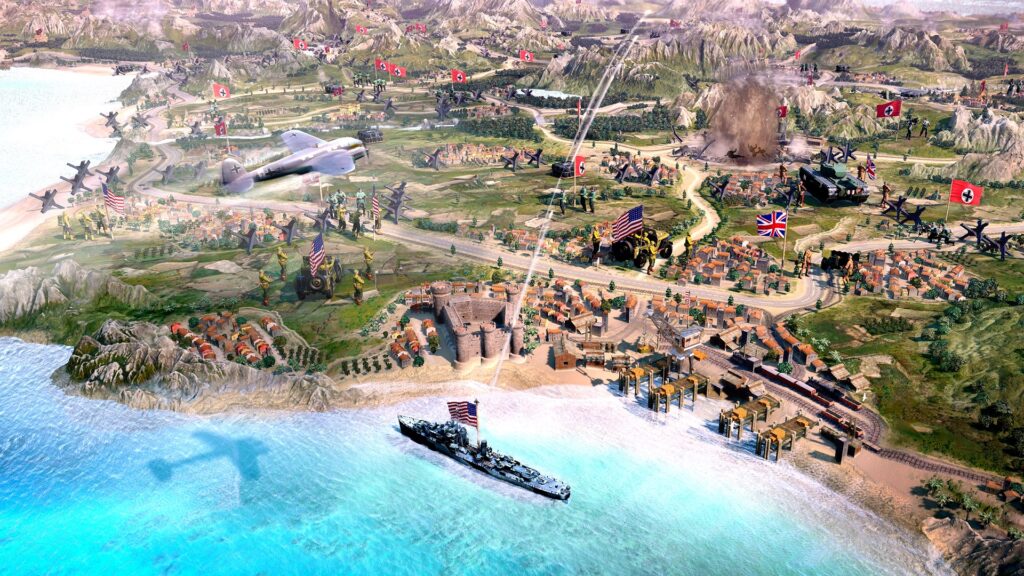Military simulation has become an essential tool for training and decision-making in warfare. This article explores the benefits of military simulations, such as providing realistic training environments, cost-effectiveness, and aiding in strategic planning and decision-making. It discusses two types of simulations: strategic, which focus on large-scale planning, and tactical, which focus on smaller-scale operations. The article also highlights the potential of harnessing HTML for military simulations, including user interface design, interactive elements, and data visualization. However, the challenges of balancing realism and complexity, technical requirements, and developing dynamic scenarios should be considered. Overall, military simulations are invaluable for preparing personnel for the complexities of modern warfare.
Unleashing the Power of Military Simulation: Exploring Strategic and Tactical Simulations
Introduction
In the ever-changing landscape of warfare, military simulation has emerged as a powerful tool for training personnel and testing strategic and tactical decision-making processes. With advancements in technology and the widespread availability of computers, simulations using software and computer models have become an integral part of military training and planning. This article aims to explore the potential of military simulations, both strategic and tactical, and how they can be harnessed effectively for training and decision-making processes.
Benefits of Military Simulation
1. Training and Skill Development
One of the primary benefits of military simulation is providing realistic training environments for military personnel. By recreating scenarios that troops may encounter in real-life combat situations, simulations allow soldiers to practice decision-making and tactical execution without the risk of actual harm. This helps in developing critical thinking, teamwork, and situational awareness skills.
2. Cost-Effectiveness
Compared to conducting field exercises or live-fire drills, military simulations offer a cost-effective alternative. The expenses associated with logistics, equipment, personnel, and safety concerns can be significantly reduced when utilizing simulations. Additionally, simulations allow for repeated training, giving soldiers the opportunity to learn from their mistakes and improve their strategies without incurring additional costs.
3. Strategic Planning and Decision-Making
Military leaders are often faced with complex strategic decisions that require careful analysis and planning. Simulations provide a platform to test different strategies and assess their potential outcomes. By experimenting with various scenarios and variables, leaders can better understand the potential consequences of their decisions, enabling them to validate or modify their strategies accordingly.
Types of Military Simulations
1. Strategic Simulations
Strategic simulations focus on large-scale planning and decision-making at the highest level of military operations. These simulations simulate the complexities of warfare, including resource allocation, force deployment, and coordination among different units. By analyzing the long-term implications of various strategies, military planners can make more sound and informed decisions when it comes to deploying forces and allocating resources.
2. Tactical Simulations
Tactical simulations, on the other hand, focus on smaller-scale operations and engagements. These simulations put soldiers in the shoes of squad leaders or platoon commanders, challenging them to make quick decisions in rapidly evolving situations. Tactical simulations help improve communication, coordination, and decision-making skills necessary for successful execution of missions in the field.
Harnessing the Power of HTML for Military Simulations
HTML, or Hypertext Markup Language, is the standard language used for creating websites and web applications. Its versatility and widespread adoption make it a powerful tool for developing military simulations. Here are some ways in which HTML can be harnessed for military simulations:
1. User Interface Design
HTML allows for the creation of intuitive and visually appealing user interfaces for military simulations. From command consoles to interactive maps, HTML enables developers to create interfaces that closely resemble real-world military equipment and environments, enhancing the immersion and realism of the simulation.
2. Interactive Elements
HTML can incorporate interactive elements such as dropdown menus, buttons, and sliders, enabling users to interact with the simulation and make decisions. These elements can simulate the process of issuing commands, adjusting settings, or manipulating variables within the simulation.
3. Data Visualization
HTML can also be used to create visual representations of data derived from the simulation. By utilizing HTML-based charts, graphs, and maps, military leaders can effectively analyze and interpret the outcomes of different scenarios, improving their decision-making process.
Challenges and Limitations
While military simulations offer numerous benefits, it is essential to acknowledge the challenges and limitations they present:
1. Realism vs. Complexity
Striking the right balance between realism and complexity is crucial in military simulations. While realistic scenarios are desirable, excessively complex simulations could overwhelm users and hinder their ability to make informed decisions. Careful consideration should be given to the purpose and target audience of the simulation to determine the appropriate level of complexity.
2. Technical Requirements
Military simulations often require powerful hardware and software resources to run smoothly. Ensuring that the simulation is compatible with a wide range of devices and operating systems can be a challenge, especially when dealing with diverse military organizations.
3. Dynamic and Adaptive Scenarios
Developing simulations that respond dynamically to user actions and adapt to changing conditions is a complex task. Creating realistic and unpredictable opponent behavior or dynamic environments adds an additional layer of complexity to simulation development.
Conclusion
Military simulations have proven to be invaluable tools for training personnel, testing strategies, and decision-making processes in a cost-effective and safe manner. By harnessing the power of HTML, simulations can be developed with intuitive user interfaces, interactive elements, and visualizations, adding depth and realism to the training and decision-making experience. As technology continues to evolve, military simulations will undoubtedly play an even more significant role in preparing military personnel for the challenges of modern warfare.
